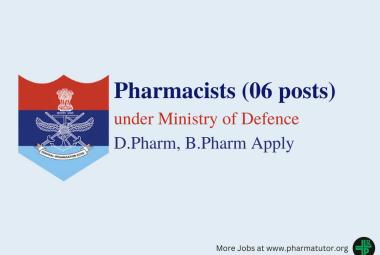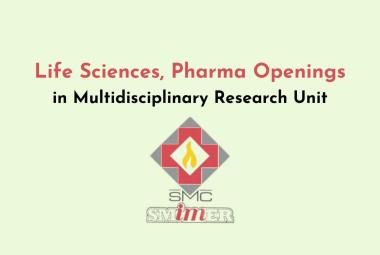 About Authors:
About Authors:
Gaurav Singh*1, Prof. Satyanand Tyagi2, Patel Chirag J3, Patel Pinkesh3, Tarun Parashar1, Soniya1
1*Himalayan Institute of Pharmacy and Research, Rajawala, Dehradun, Uttarakhand, India-248007.
2President & Founder, Tyagi Pharmacy Association (TPA) & Scientific Writer (Pharmacy), Chattarpur, New Delhi, India-110074.
3Department of Pharmaceutics, Maharishi Arvind Institute of Pharmacy, Mansarovar, Jaipur, Rajasthan, India-302020.
*gaurav.hipr@gmail.com, +91-8057832184/9236167104
ABSTRACT:
Citrulline is a non-essential amino acid, meaning that the body can manufacture it from other nutrients. Within the body, citrulline is converted to the amino acid L-arginine i.e. citrulline acts as a precursor of amino acid arginine. Some of the proposed uses of citrulline supplements are based on raising levels of arginine. Citrulline also plays a role in a physiological process called “the urea cycle,” in which toxic ammonia is converted to urea. Citrulline boosts our energy levels by lowering blood lactate concentration. It also enhances the process of elimination of ammonia. Although citrulline is not coded for by DNA directly, several proteins are known to contain citrulline as a result of a posttranslational modification.
[adsense:336x280:8701650588]
These citrulline residues are generated by a family of enzymes called peptidylarginine deiminases (PADs), which convert arginine into citrulline in a process called citrullination or deimination. Proteins that normally contain citrulline residues include myelin basic protein (MBP), filaggrin, and several histone proteins, whereas other proteins, such as fibrin and vimentin are susceptible to citrullination during cell death and tissue inflammation. In recent studies, citrulline has been found to relax blood vessels. Circulating citrulline concentration is, in humans, a biomarker of intestinal functionality. L-citrulline is a naturally occurring amino acid. It is found in some foods like watermelons and is also produced naturally by the body.
L-citrulline is used for Alzheimer’s disease, dementia, fatigue, muscle weakness, sickle disease, erectile dysfunction, high blood pressure, and diabetes. It is used for heart disease, body building, increasing energy, and for improving athletic performance. L-citrulline might help increase the supply of ingredients the body needs to making certain proteins. It might also help open up veins and arteries to improve blood flow and reduce blood pressure. The aim of present article is to provide in depth knowledge about clinical uses, functions, and health benefits of citrulline.An attempt is also made to focus on biosynthesis, sources as well as side effects of citrulline.
Reference Id: PHARMATUTOR-ART-1580
INTRODUCTION
The organic compound citrulline is a α-amino acid (Fig.1. A – 1. C). Its name is derived from citrullus, the Latin word for watermelon, from which it was first isolated in 1914 by Koga & Odake. It was finally identified by Wada in 1930 [1, 2].It has the idealized formula H2NC (O) NH (CH2)3CH (NH2) COOH. It is a key intermediate in the urea cycle, the pathway by which mammals excrete ammonia. Citrulline is a non-essential amino acid which acts as a precursor of amino acid ‘arginine’. It is generated during the urea cycle when carbon dioxide and ammonia combine with ornithine. Chemical reactions taking place in our body produce citrulline from ornithine. It is required for the synthesis of urea and arginine. It promotes releases of nitric oxide into the blood stream which is essential for proper opening of blood vessels. Measurement of plasma citrulline concentration helps determine intestinal functionality. Although citrulline is an amino acid, it is not present in most of the proteins and enzymes. It is present in some specific proteins in the hair, skin and neural cells. Liver contains a high amount of citrulline [3].
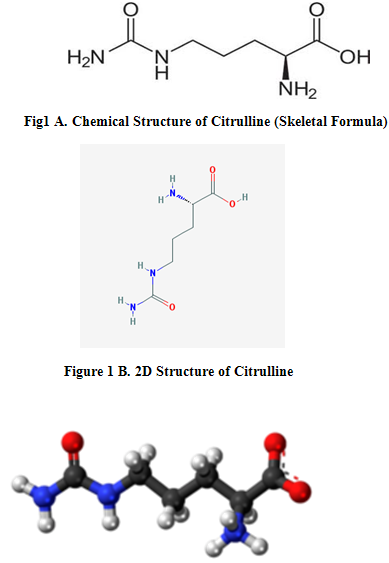
Figure 1 C. Ball and Stick Model of Zwitter Ionic Citrulline
[adsense:468x15:2204050025]
BIOSYNTHESIS AND SOURCES
Citrulline is made from ornithine and carbamoyl phosphate in one of the central reactions in the urea cycle (Fig. 2 A- 2. C). It is also produced from arginine as a by-product of the reaction catalyzed by NOS family (NOS; EC 1.14.13.39) [4].Arginine is first oxidized into N-hydroxyl-arginine, which is then further oxidized to citrulline concomitant with release of nitric oxide.
Citrulline in the form of citrulline malate is sold as a performance-enhancing athletic dietary supplement, which was shown to reduce muscle fatigue in a preliminary clinical trial [5, 6]. Rich sources of citrulline are meat, fish, eggs, milk, legumes and other foods which are rich in proteins [7]. The rind of watermelon (Citrullus lanatus) is a good natural source of citrulline. The malate or malic acid present in fruits like apples enhances the effect of citrulline [10].
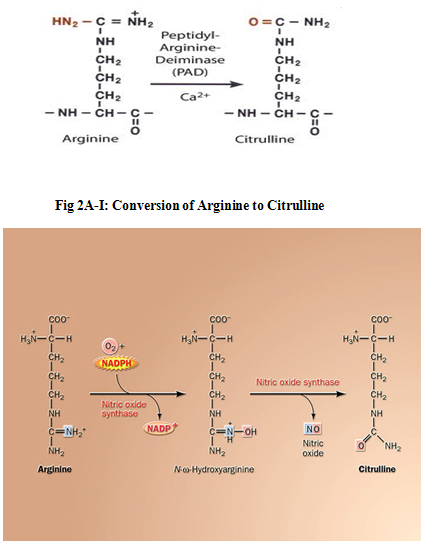
Fig 2A-II: Conversion of Arginine to Citrulline
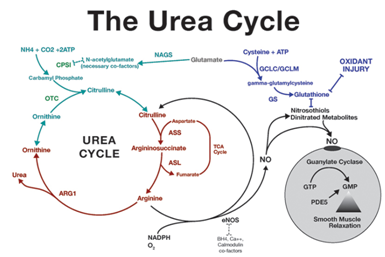
Fig 2B: A View of Urea Cycle Showing Biosynthesis of Citrulline
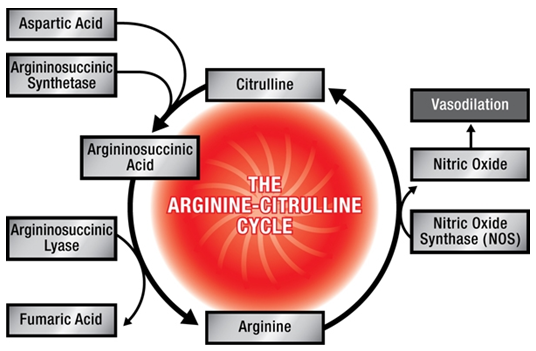
Fig 2C: A View of Arginine-Citrulline Cycle
NOW YOU CAN ALSO PUBLISH YOUR ARTICLE ONLINE.
SUBMIT YOUR ARTICLE/PROJECT AT articles@pharmatutor.org
Subscribe to Pharmatutor Alerts by Email
FIND OUT MORE ARTICLES AT OUR DATABASE
FUNCTIONS
Although citrulline is not coded for by DNA directly, several proteins are known to contain citrulline as a result of a posttranslational modification. These citrulline residues are generated by a family of enzymes called peptidylarginine deiminases (PADs), which convert arginine into citrulline in a process called citrullination or deimination. Proteins that normally contain citrulline residues include myelin basic protein (MBP), filaggrin, and several histone proteins, whereas other proteins, such as fibrin and vimentin are susceptible to citrullination during cell death and tissue inflammation. Patients with rheumatoid arthritis often have detectable antibodies against proteins containing citrulline.
Although the origin of this immune response is not known, detection of antibodies reactive with citrulline (anti-citrullinated protein antibodies) containing proteins or peptides is now becoming an important help in the diagnosis of rheumatoid arthritis [8]. In recent studies, citrulline has been found to relax blood vessels. Circulating citrulline concentration is, in humans, a biomarker of intestinal functionality [9].
HEALTH BENEFITS/CLINICAL SPECTRUM/ CLINICAL POTENTIAL OF CITRULLINE
The various health benefits [10] of citrulline may be listed as follows-:
* Citrulline is essential for maintaining the correct nitrogen level.
* It regulates important metabolic processes.
* It helps maintain the acid-base balance in the body.
* It strengthens our immune system and thus improves overall health.
* It boosts our energy levels by lowering blood lactate concentration. It also enhances the process of elimination of ammonia from muscle cells and liver. Ammonia is a waste product. Citrulline thus acts as a detoxifying agent.
* It helps to avoid muscle fatigue.
* It promotes the production of insulin, creatine and the growth hormone.
* It makes human body fit for severe and extensive training. It helps prevent training like cramping, bloating or water retention that is often experienced after hard training.
*It plays an important role in the production of arginine, which stimulates the release of human growth hormone and prolactin. Arginine helps in bodybuilding, in enhancing blood flow and in relieving stress.
* L-citrulline is present in most of the l-arginine supplements. The recommended daily dose of l-citrulline is 200-1000 mg once a day, before going to bed. L-citrulline and l-arginine help improve heart health as they promote vasodilatation, easy opening of the blood vessels. Improved blood flow helps lower the symptoms of angina and high blood pressure. Thus, citrulline reduces the risk of cardiovascular diseases. It helps strengthen the immune system and offers energy.
* L-citrulline works like Viagra. The health benefits offered by this amino acid include improvement in the sexual function in both men and women, providing physical and mental relief. It helps reduce stress, improves body metabolism and the communication between nerve cells and other parts of the body. As it brings about relaxation of blood vessels, all body parts receive sufficient blood. Improve blood flow helps prevent erectile disorders.
* Citrulline is also used to treat Alzheimer’s disease, dementia, sickle cell disease, high blood pressure. It is also used to control high blood pressure in children after heart surgery and diabetes.
* Citrulline malate supplements are recommended to athletes. They help improve aerobic performance and capacities of the athletes and are considered better than l-arginine supplements. The recommended dose of citruline malate is three to four grams twice daily.
* And lat but not least L-Citrulline Oral may also be used to treat: High Amount of Ammonium in the Blood, Inherited Deficiency of Arginosuccinate Lyase, Inherited Deficiency of Carbamyl Phosphate Synthetase, Ornithine Carbamyltransferase Deficiency, Arginase Deficiency, Lysinuric Protein Intolerance [13].
SIDE EFFECTS [10]
Knowing only the benefits of the nutritional supplements won’t help us in the long run. An over dose of citrulline can cause following side effects. The related side aspects of citrulline may be listed as follows-:
* L-citrulline can interact with some specific medications and can lessen their effectiveness.
* Those diagnosed with heart disease or cardiovascular problems should not take l-citrulline, because it may aggravate the problem.
* Overdose of l-citrulline may result in a sudden and unsafe drop in blood pressure.
* Pregnant and breast-feeding women should avoid taking citrulline.
Although citrulline is known for the benefits that it offers, it is necessary to consult physician before opting for the supplements.
ILLUSTRATIVE EXPLANATIONS OF CITRULLINE BENEFITS [13]
* Cardiovascular Health:
L-Citrulline’s primary benefit is in the opening and relaxing of blood vessels. A healthy increase in blood flow increases the transportation of oxygen and nutrients through the body. An important intermediate in the urea cycle, Citrulline functions alongside Arginine and Ornithine in ridding the body of ammonia. Since Citrulline is a precursor to Arginine, it is a readily available source material for Arginine production, which in turn produces of Nitric Oxide (NO) in blood vessels. NO plays have a fundamental role in vascular function and blood flow. Citrulline supports detoxification pathways, NO production, and a healthy cardiovascular system. The body converts Arginine to Citrulline, producing nitric oxide in the process. Citrulline is then chemically recycled back into Arginine in the endothelial cells of the blood vessels. Citrulline and Arginine’s benefits are similar, but for healthy blood flow and nitric oxide production, citrulline is preferred. Arginine is diverted to other less critical uses while citrulline’s main function is in the blood vessels.
* Exercise Recovery:
During intense exercise, muscle consumes oxygen rapidly (aerobic energy). The body then utilizes ATP, adenosine triphosphate, for continued energy (anaerobic energy). Using ATP causes the muscles to produce IMP (inosine monophosphate), a nucleoside, lactic acid, and ammonia. These chemicals accumulate fatigue the muscles. In fact, lactic acid and ammonia levels in the muscles are used to evaluate fatigue levels. L-Citrulline aids the body in elimination of ammonia. This clearing allows the body to recover from a workout and frees ATP energy for such uses as respiration and signal transduction.
* Liver Function:
L-Citrulline helps detoxify the liver through the conversion of ammonia to urea. L-Citrulline, like L-Arginine and L-Ornithine, is a metabolite in the urea cycle and is involved in liver detoxification and vasodilation pathways. It is produced during the urea cycle when carbamoyl phosphate becomes citrulline in the ornithine carbamoyltransferase reaction. When endogenous supplies of ornithine carbamoyltransferase are insufficient, supplemental L-Citrulline has been shown to support ammonia incorporationand liver detoxification.
* Sexual Function:
L-Citrulline increases the body’s nitric oxide levels. Nitric oxide helps blood vessels relax. L-Citrulline has the same basic effect as Viagra, which treats erectile dysfunction, but L-Citrulline may even prevent ED, leading to enhanced sexual function.
DISCUSSION AND CONCLUSION
Classified as a nonessential amino acid, Citrulline is neither a component of any major proteins nor enzymes. It’s mainly responsible for the proper functioning of the immune systems as well as processes related to the production of energy in the body. A very unusual amino acid, Citrulline is defined through a variety of biological and chemical reactions. This amino acid forms during the urea cycle and forms ornithine when combined with carbon dioxide. The process continues thusly: ornithine combines with aspartic acid forming arginosuccinic acid, which is then metabolized to the most, humanly bio available form, L-arginine. This transformation of citrulline to arginine is critical to homeostatic maintenance of certain toxicities within the body. Arginine is a key component in the formation of urea in the liver. Citrulline’s conversion to arginine is essential to the process of removing nitrogen metabolites from the body. Citrulline, aspartic acid, citric acid, and magnesium work synergistically to remove excess nitrogen as well as aid in the digestion, absorption, and metabolic processes of specific proteins.
Citrulline is a phyto-nutrient amino acid that is converted into the amino acid arginine in the body. These two compounds play an important part in the urea cycle, whereby humans excrete ammonia.
Citrulline is found in watermelon, milk, fish, legumes and flaxseed, with the highest concentration found in walnut seedlings. Citrulline is also produced naturally within the body. As an important part of the urea cycle, citrulline helps to expel ammonia from the liver. Citrulline is created internally by the body by the mixing of ammonia, carbon dioxide and orthinine in the cell's mitochondria. Much of this activity takes place in the liver, where high concentrations of citrulline are found. The citrulline is then flushed out, taking the absorbed ammonia with it. Citrulline supplements also support the absorption of ammonia and the detoxification of the liver [11]. In addition to clearing the liver of ammonia, citrulline plays a role in clearing fatigued muscles of ammonia.
When lactic acid and ammonia build up in muscles as a result of working out or physical stress, citrulline acts to clear out these fatigue-causing elements and frees up the muscle for fresh energy production. Citrulline supplements are regularly taken by athletes and body builders to help them overcome muscle fatigue quickly and naturally. Citrulline is a precursor to the amino acid arganine, which in turn releases nitric oxide into the bloodstream. Nitric oxide is essential for proper vasodilatation, or opening of the blood vessels. Citrulline promotes healthy circulation and the proper flow of blood through the system, helping to treat hypertension, angina and other cardiovascular problems, according to Medical News Today. According to Medical News Today, the vasodilatation effects of citrulline help to support healthy sexual function, in a similar manner to Viagra. While citrulline is not organ specific, it does help improve blood flow to all parts of the body and relaxes the blood vessels. This helps treat erectile dysfunction; maintaining adequate levels of citrulline in the body may help prevent erectile disorders. Citrulline plays an important role in detoxifying muscle and liver cells by facilitating the removal of ammonia. It also increases energy and boosts the immune system. Recently, citrulline has received attention in the media due to studies that indicate it may help individuals affected by erectile dysfunction caused by circulatory problems.
Water melon is exceptionally high in citrulline, which is particularly prevalent in the watermelon rind. Although the rind is safe to eat, it is not as pleasant tasting as the pink meat of the fruit. Every 4 ounce serving of watermelon contains approximately 150 mg of citrulline[12]. The appropriate dose of L-citrulline depends on several factors such as the user’s age, health, and several other conditions. At this time there is not enough scientific information to determine an appropriate range of doses for L-citrulline. Keep in mind that natural products are not always necessarily safe and dosages can be important.
Be sure to follow relevant directions on product labels and consult your pharmacist or physician or other healthcare professional before using [14]. In conclusion, citrulline supplementation may not only boost physical activity performance, but also provide our bodies with a means of eliminating the amino acid breakdown products of protein metabolism.
Equally important is the detoxification of ammonium and lactate from the blood[15].
ACKNOWLEDGEMENT
The corresponding author, Mr. Gaurav Singh is highly thankful to his Parents & Teachers, wife Pooja, and daughter Tanisha for their moral support and encouragement. Last but not the least, support of all my students and the one above all of us, the omnipresent God, for answering my prayers for giving me the strength to plod on despite my constitution wanting to give up and throw in the towel, thank you so much Dear Lord.
REFERENCES
1. Fearon, William Robert, "The Carbamido Diacetyl Reaction: A Test for Citrulline", Biochemical Journal, 1939, 33(6), 902-907.
2. en.wikipedia.org/wiki/Citrulline#cite_note-2
3. buzzle.com/articles/citrulline-benefits.html
4. Cox M, Lehninger AL, Nelson DR, Lehninger principles of biochemistry, 3rd Ed, New York: Worth Publishers.
5. Bendahan D, Mattei JP, Ghattas B, Confort-Gouny S, Le Guern ME, Cozzone PJ, “ Citrulline/malate promotes aerobic energy production in human exercising muscle”, Br J Sports Med, 2002, 36(4), 282-9.
6. en.wikipedia.org/wiki/Citrulline#cite_note-7
7. askville.amazon.com/foods-citrulline-effects-body/AnswerViewer.do?requestId=11343651
8. Coenen D, Verschueren P, Westhovens R, Bossuyt X, "Technical and diagnostic performance of 6 assays for the measurement of citrullinated protein/peptide antibodies in the diagnosis of rheumatoid arthritis", Clin. Chem, 2007, 53(3), 498-504.
9. Crenn P, et al, Post-absorptive plasma citrulline concentration is a marker of intestinal failure in short bowel syndrome patients, Gastroenterology, 2005, 119, 1496-505.
10. buzzle.com/articles/citrulline-benefits.html
11. ehow.com/list_6495836_benefits-citrulline_.html
12. ehow.com/info_7848880_fruits-citrulline.html
13. citrullis.com/?page_id=19
14. webmd.com/vitamins-supplements/ingredientmono-1245-L-CITRULLINE.aspx?activeIngredientId=1245&activeIngredientName=L-CITRULLINE
15. citrullis.com/?page_id=2
NOW YOU CAN ALSO PUBLISH YOUR ARTICLE ONLINE.
SUBMIT YOUR ARTICLE/PROJECT AT articles@pharmatutor.org
Subscribe to Pharmatutor Alerts by Email
FIND OUT MORE ARTICLES AT OUR DATABASE




